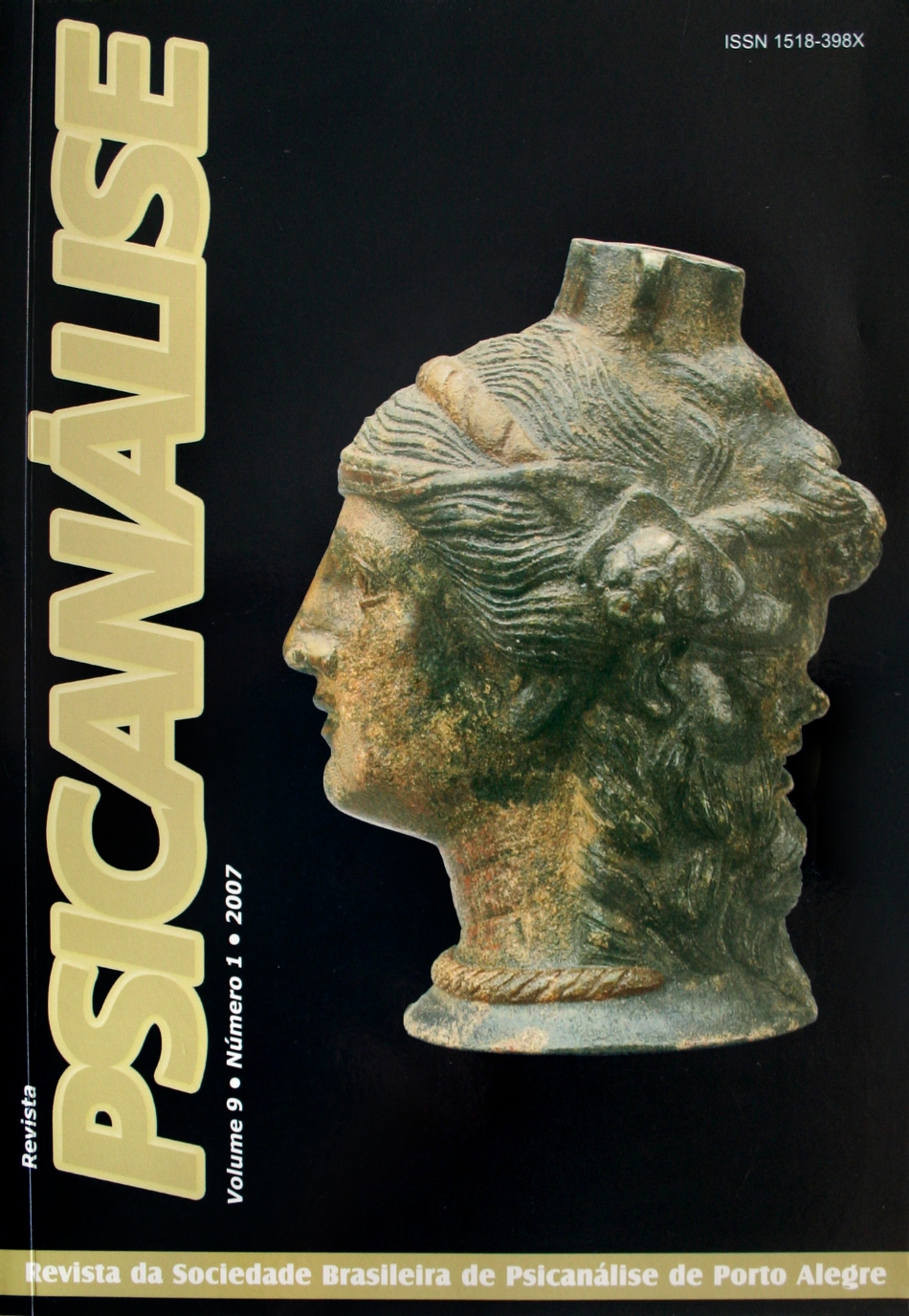The unconscious
“messenger of truth” under Bions’ perspective of the continent-content interaction
DOI:
https://doi.org/10.60106/rsbppa.v9i1.251Keywords:
Unconscious., Truth, Lie, PreconceptionAbstract
The paper represents an investigation which tries to demonstrate, through clinics, that the unconscious, more than an organ meant to store unconscious undesirable impulses which continually looks for satisfaction, represents in an ontogenic sense an organ that produces inexhaustive truth. As the conscience perceives the reality through information sent by the sense organs, that are subdued to the principle of pleasure, there always exists the danger of a lying conscience; a lie which often implicates in danger to life itself. The unconscious then would act as a rectifying organ of the conscience lies, by means of “pre-concept” states of wishful thinking or expectation comparable to innate or aprioristic disposition of the baby towards the nipple. The concept of repression, created by Freud, could be questioned since continent-content theory (Bion) that supports the pre-conscient movement towards the thruth produced by the unconscious.Downloads
References
BENVENISTE, E. Problems in General Linguistics. Miami: Miami University Press, 1971.
BION, W. R. (1962). Learning from experience. In: Seven servants, New York: Jason Aronson, 1977.
______. Second Thoughts: selected papers on psycho-analysis, New York: Jason Aronson, 1967.
______. Cogitations. London: Karnak Books, 1992.
FAIRBAIRN, W. R. D. Psychoanalytic Studies of the Personality. London: Tavistock, 1952.
FREUD, S. (1900). The Dream-Work. In: SE. London: Hogarth Press. vol. 4-5 .
______(1911). Formulations on the Two Principles of Mental Functioning. In: SE. London: Hogarth Press. vol. 12, p. 213.
______(1911a) The Handling of Dream Interpretation in Psychoanalysis. In: SE. London: Hogarth Press. vol. 12, p. 93.
______(1915). The Unconscious. In: SE. London: Hogarth Press. vol. 14, pp. 159, 201.
______. (1920). Beyond the Pleasure Principle. In: SE. London: Hogarth Press. vol. 18, p. 28.
______ (1925). The Interpretation of Dreams (1900). In: SE. London: Hogarth Press. vol. 5, p. 506n
KLEIN, M. (1946). Notes on some schizoid mechanisms. In: . Envy and Gratitude. London: Virago, 1990.
LACAN J. (1966). Écrits. Paris: Seuil. LAPLANCHE, J.; LECLAIRE, S. (1960). The Unconscious: a psychoanalytic study. Yale French Studies, n. 48, 1972.
LÓPEZ-CORVO, R. E. Diccionario de la Obra de Wilfred R. Bion’s. Madrid: Biblioteca Nueva, 2002
MATTE-BLANCO, I. The Unconscious as Infinite Sets. London: Karnac Books, 1998.
MELTZER, D. Dream-Life. London: Clunie Press, 1983.
RICOEUR, P. (1970). Freud and Philosophy: an essay on interpretation. New Haven: Yale University Press.
SAUSSURE, F. (1916). Course in General Linguistics. Glasgow: Collins Fontana.
Downloads
Published
How to Cite
Issue
Section
License
I attribute the copyrights that belong to me, on this work, to SBPdePA, which may use and publish it by the means it deems appropriate, including on the Internet or in any other computer processing.
















